If You Can Do These 5 Moves Without Stopping, You’re in Top Shape After 50

After 50, the rules change. Staying in shape isn’t just about lifting heavier or running longer, it’s about moving with purpose, power, and control. The men and women who stay fit into their 50s and beyond aren’t always the fastest or the strongest. But they move well, handle their bodyweight, and recover without missing a beat.
These five exercises demand more than strength. They test your endurance, coordination, mobility, and total-body awareness. Completing them back-to-back without stopping means your joints work, your lungs handle pressure, and your muscles fire like they’re supposed to. That’s what top shape looks like past 50: resilient, efficient, and well-rounded.
This isn’t a test you’ll breeze through without training. But it’s a benchmark worth chasing. Work your way toward it with smart progression, and you’ll build a body that performs better than most people half your age.
5 Moves That Prove You’re Fit After 50
Bodyweight Squats – 20 reps
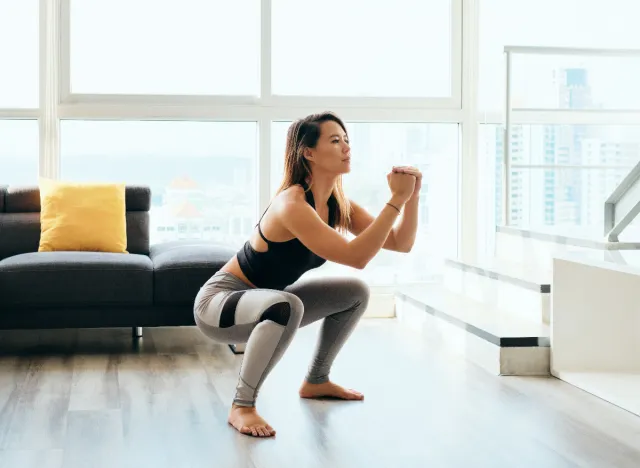
Squats are a non-negotiable after 50. They load the legs, activate the glutes, and strengthen your hips and knees. But more importantly, they teach control and balance from the ground up. Performing 20 in a row with strong form shows your legs still have power and your joints still have integrity.
How to Do It:
- Stand tall with feet just wider than hip-width.
- Lower your hips back and down, keeping knees in line with toes.
- Drive through your heels to return to standing.
- Maintain a tall chest and tight core for every rep.
Push-Ups – 15 reps
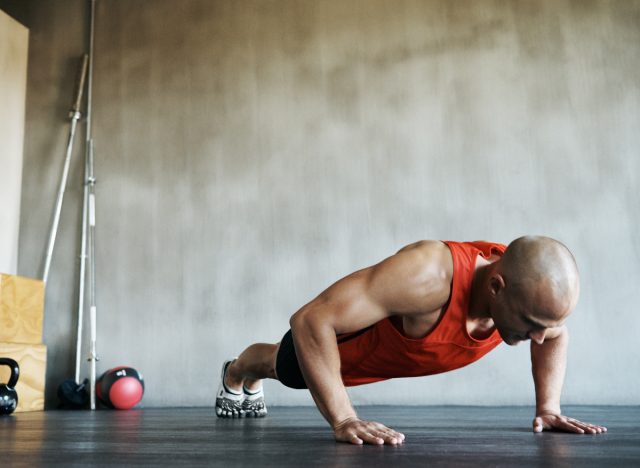
A push-up done well isn’t just an arm move, it’s a full-body press that tests your chest, shoulders, core, and even glutes. At 50, knocking out 15 clean reps without sagging or compensating shows real control. It means your shoulders still move well, and your trunk knows how to brace. That’s the kind of strength that carries over into everything else you do.
How to Do It:
- Begin in a high plank with hands slightly outside shoulder-width.
- Lower your chest to just above the floor while keeping elbows at a 45-degree angle.
- Press up while keeping your body in a straight line.
- Avoid flaring your elbows or letting your hips dip.
Glute Bridge March – 20 total steps (10 each leg)
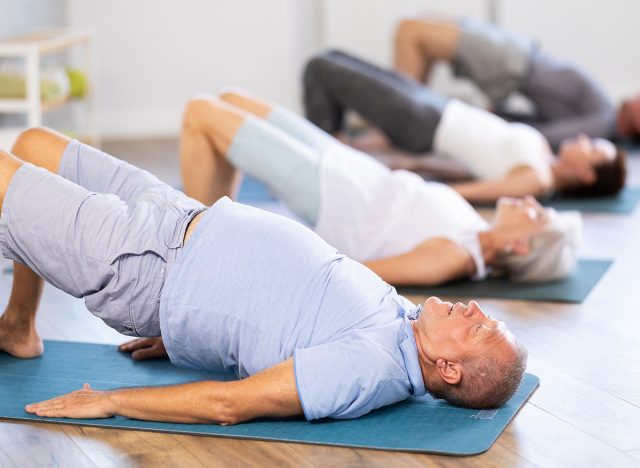
This movement hammers your core and hips at the same time. It trains your glutes to fire while your abs keep your pelvis stable, a combo that protects your spine and powers your stride. Being able to march from this position without your hips dropping means you’re strong where most people get weak after 50. It’s a quiet killer of bad posture and low-back pain.
How to Do It:
- Lie on your back with knees bent and feet flat.
- Lift your hips into a glute bridge, squeezing hard at the top.
- Lift one foot a few inches, keeping hips level.
- Alternate sides without letting your pelvis twist or drop.
Plank Shoulder Taps – 20 total taps (10 each side)
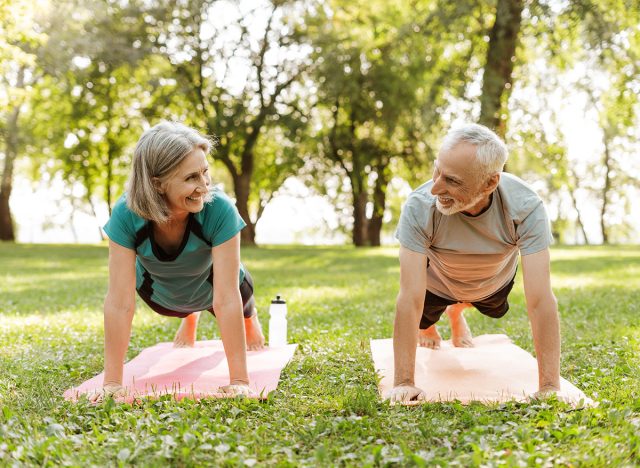
This move demands core stability, anti-rotation strength, and shoulder endurance. Tapping your shoulder without shifting your hips means your deep stabilizers are doing their job. It’s harder than it looks, and most people over 50 struggle to keep their form past a few reps. Nailing all 20 shows real trunk control and upper-body coordination.
How to Do It:
- Start in a high plank with feet hip-width apart.
- Brace your core and tap your left shoulder with your right hand.
- Return the hand and switch sides without twisting your hips.
- Move slow and keep your spine neutral throughout.
Reverse Lunges – 10 each leg
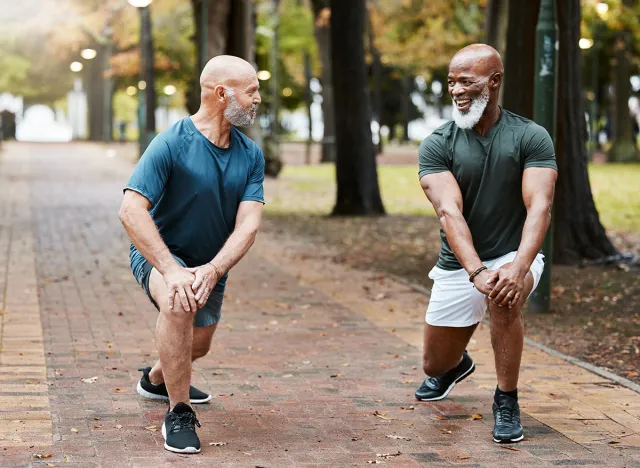
Lunges train balance, stability, and single-leg strength, three things that fade fast with age. Reverse lunges protect your knees while challenging your coordination and range of motion. Finishing 10 per leg without wobbling or losing posture shows your lower body still moves with control. And that kind of movement means fewer falls, faster recovery, and stronger walks.
How to Do It:
- Stand tall with feet together and core braced.
- Step one foot back and lower into a lunge, keeping the front knee stacked.
- Push through your front heel to return to standing.
- Alternate legs, keeping the same rhythm and posture each rep.